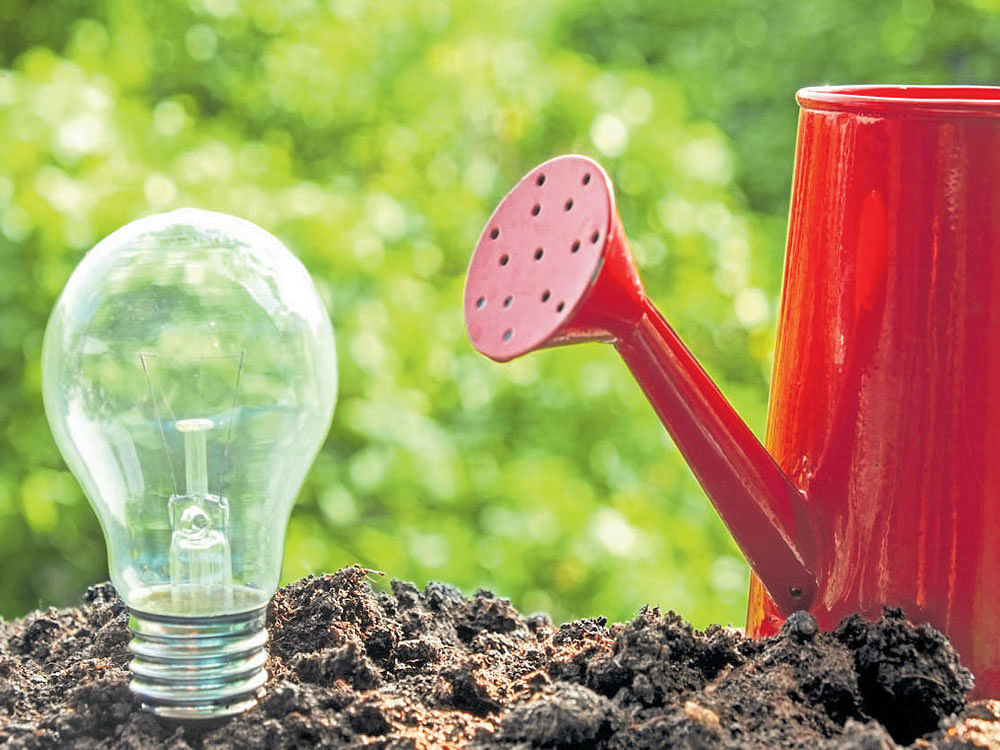
With increasing population and rapid urbanisation, availability of natural resources is expected to be a major challenge in the future.
Moderate UN scenarios suggest that if current population and consumption trends continue, by the 2030s, we will need the equivalent of two Earths to support us. So, there is an urgent need to conserve natural resources, reduce carbon emissions and reverse global climate change. This requires collaborative efforts from everyone, including governments, corporates and the citizens. Moreover, there is a need to make sustainability a part of our life in every way, from low flow taps and LED lighting to waste recycling and car pooling.
It is essential to recognise and utilise the power of technology in advancing sustainable practices and initiatives. Let us take the example of buildings. There are several software tools available today that enable engineers to design buildings in the most optimised way. There are tools to study the impact of building orientation on energy consumption, tools to study sun path and suggest shading requirements for windows, and tools to even calculate the material requirement in an accurate way.
These tools have ensured that designers can not only evaluate different designs quickly, but also make informed decisions based on the impact of different building parameters on energy and water consumption, and occupants’ comfort. The biggest advantage software tools have brought in is that the designers and building owners can have an estimate of the environmental footprint of the building well in advance, during the initial stages of design, which may help in right decision-making. There is also good availability of expertise in the industry due to capacity-building efforts over the last 10 years.
Advancements in technology have also brought about great improvements in efficiency of systems. For example, lighting from an incandescent bulb had efficacy of 10 lumens/watt, and today, we have LED lighting with efficacy of over 100 lumens/watt. LED lighting is not only 10 times more efficient, but also has a life that is several times more compared with incandescent bulbs. Similarly, mechanical equipment like chillers, pumps and fans used in air conditioning are graduating to magnetic levitation technology with greatly improved efficiencies and reduced noise levels.
High performance spectrally selective glass can reduce heat ingress by 15 times, compared with normal single glass in a building. Smart water meters and sensor-based taps help in reducing water consumption. Availability of data and access to global expertise in an increasingly connected world has enabled implementation of new technologies like radiant cooling in buildings in India. Radiant cooling is about 30% more efficient than conventional air conditioning systems and requires no additional cost.
Automation will play an increasingly important role by enhancing efficiency of operations and ensuring health of systems and equipment. The power of automation has not yet been realised by the industry at present. Automation is being used mainly to switch on/off equipment from a central point (located mostly in the same building). Automation can do wonders if implemented and utilised in the right way. For example, in a large commercial building, automation can not only help in scheduling of major systems like lighting and air conditioning, it can also be used for accurate operation of the air conditioning system by ramping up/down, based on weather, occupancy or any other defined parameters.
Algorithms can be defined to make sure the systems work in the right sequence and best efficiencies all the time. Alerts can be set so that any parameter going out of range will trigger an SMS to the operator or facility manager. Data collected through the automation system can provide a wealth of information for future designs and opportunities for improvement. Not only this, continuous monitoring of essential data about building systems can provide insights into the health of equipment and thus avoid breakdowns and reduce downtime.
The most important aspect of adopting new and more efficient technology is usually the initial investment. It is general perception that any new technology or an efficient system or equipment requires an additional cost, which is actually a myth in most cases. For example, in buildings, the cost of software tools or expertise to optimse the building design is offset by the savings in material or equipment. If insulation for a building and a high performance glass are perceived as expensive features, the reduced capacity of air conditioning and electrical equipment should easily offset the cost of glass and insulation.
So, if you apply a holistic approach to a building, you always end up with a case where your building is highly efficient, and at the same time, is costing less than a conventional building. It is just the additional effort and right analysis that is required during decision-making that can make the difference. So, it is all about willingness more than anything else to adopt new technology and ensure efficiency and sustainability. As the saying goes ‘Where there is a will, there is a way’… and definitely a sustainable way.
(The autor is Regional Manager — Infrastructure, Infosys)